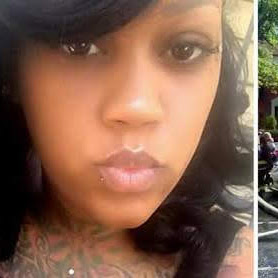It is far too easy to neglect our hair and as the seasons are constantly changing, our hair needs and requires consistent love. There are a TON of reasons to implement this into your regular hair care routine, so if you're someone who cares about your locks tune in as I'm here with you today to talk about the importance of deep conditioning your strands.
SO WHO SHOULD DEEP CONDITION:
Just about anyone who styles, uses products, heat, or manipulates their hair throughout the week. As we constantly use methods to keep our styles looking good, we sometimes tend to forget that as our hair is being done we are slowly taking away its nourishment. Styles like twists, braids, or any protective styling can leave the hair feeling dry and brittle after it is taken out. While using products are necessary, they create buildup causing us to wash/cleanse our hair more often, taking away its moisture and retention. Heat styling is a dead give away as it directly damages our hair from the inside out, and too much manipulation can stress the strands causing them to become weak and prone to breakage. So if you're someone who does any one of these things to your hair, you are a top contender for a deep conditioning treatment.
BENEFITS OF DEEP CONDITIONING
- Penetrates the hair shaft allowing moisture and protein to be absorbed from within.
- Important for the recovery of dry, damaged hair especially heat damaged victims.
- Restores shine, strength, and elasticity
- Help prevent damage causing breakage and split ends
- Retains shine and bring back natural bounce to curls
- Did I forget to mention it AIDS IN HAIR GROWTH!
Who would have thought deep conditioning once a week could do so much to your hair? Anyone can deep condition but don't feel discouraged if one method doesn't work for you as its a trial and error process!
HOW I DEEP CONDITION
- I start off with clean hair (normally done on a wash day) and part it into different sections, making it easier to evenly distribute the product.
- I've currently been using Shea Moisture Deep Treatment Mask and mixing in Avocado Oil & Up North Naturals 8 Oil Blend.
- I then even distribute throughout then twisting down each section and adding a plastic cap over it.
- A new trick I've been using is Thermal Hair Cares Hot Head which you heat up, opening up your hair shaft and allowing your hair to absorb more of the nutrients.
- I leave it in my head with the Hot Head on for a minimum of 20 minutes then rinse out with cool water.
If this wasn't enough to get you started, I'm not sure what will be ! Give it a try and let me know what you use and how its working for you!
Have an AMAZING hair week everyone !
Shernette | @hi_shern



















